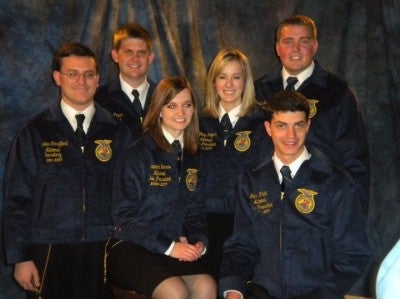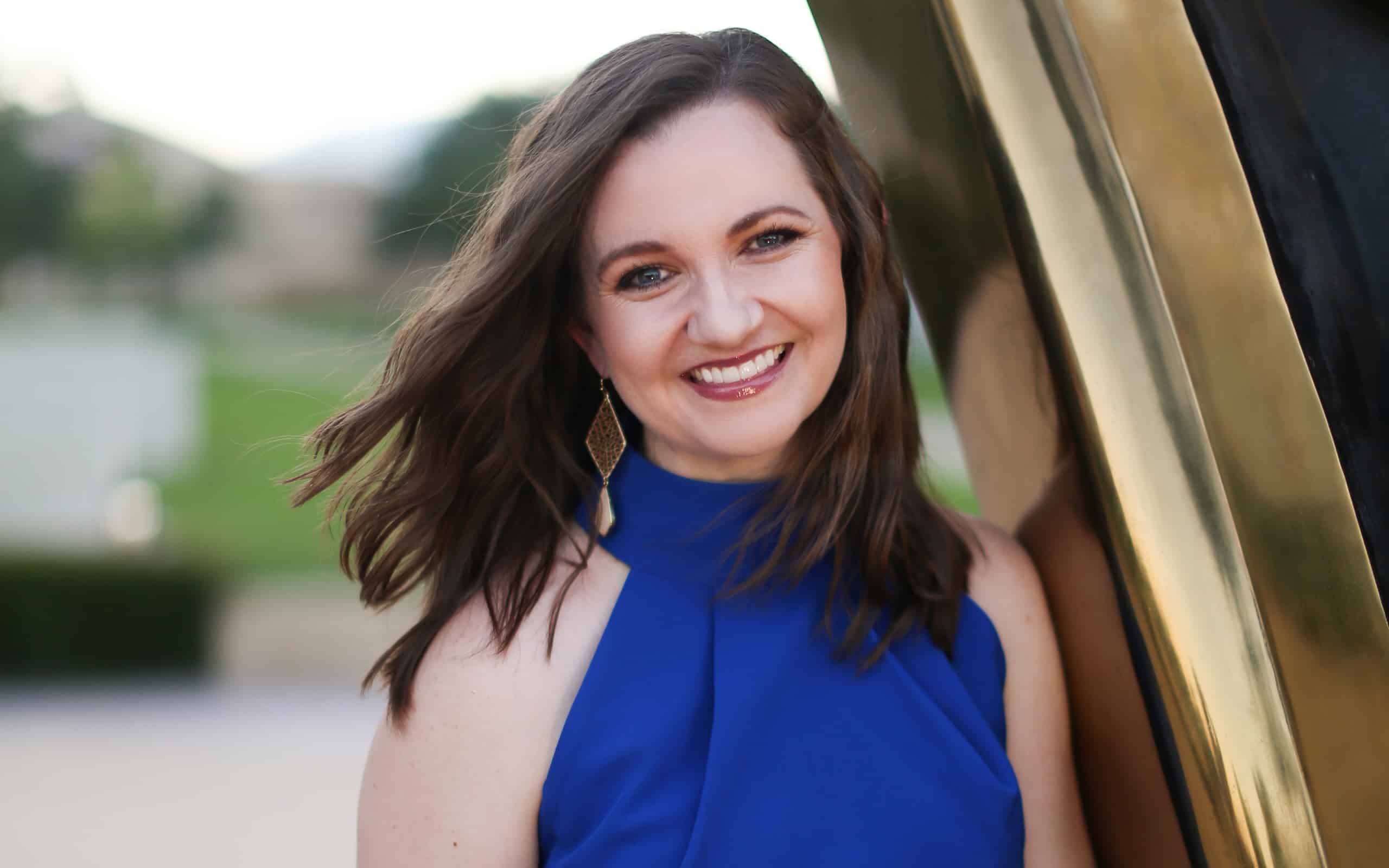Shannon Norris’s goal is to help others understand agriculture.
The current avenue: as a new professor at her alma mater, New Mexico State University College of Agricultural, Consumer and Environmental sciences. There, the 2010-11 Western Region vice president and two-time New Mexico state FFA officer (2007-09) is helping create an agricultural communications major.
“Communicators are integrators,” Norris says. “We put the puzzle pieces together for people. Having people specialized to communicate effectively and efficiently in a clear, concise, interesting and novel way is absolutely critical to our food and fiber production.
“Food unites us,” she says. “Everyone has to eat, and it’s such an important conversation to understand.”

Shannon Norris, third from left, with the 2010-11 national FFA officers.
Her role comes immediately following graduation from Texas A&M with a doctorate in agricultural leadership, education and communications and certificates in advanced research methods and homeland security. (She also has a bachelor’s degree in agricultural and Extension education from NMSU and a masters in agricultural communications from Oklahoma State.) For her dissertation, she developed a curricular framework to teach soldiers in the U.S. Army Special Operations Command (USASOC) how to assess agriculture systems in Middle Eastern conflict zones. The goal: Help build sustainable food production in an area of the world struggling with food insecurity.
The idea grew from a pivotal trip to Haiti, in which she and other Texas A&M ag education students taught local farmers methods to help increase yields for their communities. “It was my first time seeing how people live in extreme poverty,” Norris says. “That particular experience reshaped where I was going.”
Norris chose to focus her research on areas of conflict due to their high inaccessibility, a key indicator of food insecurity. “If we want to impact the world in food production, we have to find places that are hard to reach,” she says, and if we want access, she believes we have to utilize the military.
The program is currently being released to the USASOC; while Norris’s future involvement is pending, her professional research will continue to support the U.S. Department of Defense.
As for the classroom, she’ll focus on empowering students the way FFA did for her. “This organization is a transformational springboard,” says Norris, who joined the Cliff FFA chapter in New Mexico as a seventh-grade Greenhand. “You put on the jacket and rise to your potential. Seeing what the community and involvement did for so many sparked my career — I look forward to the opportunity to connect people to what makes them them.”












